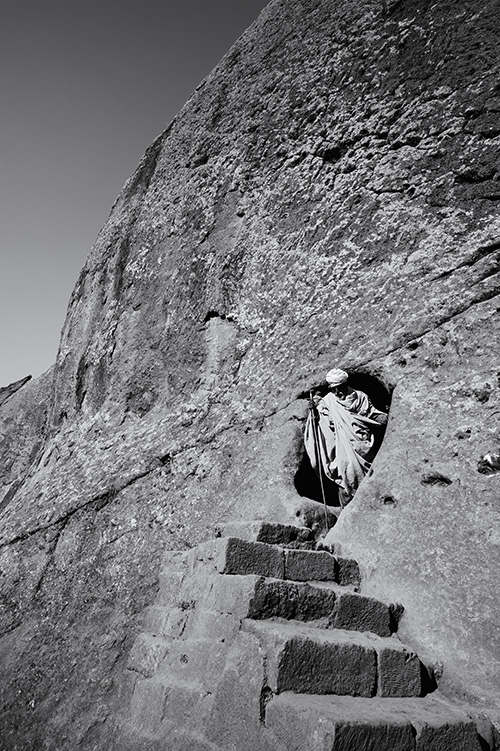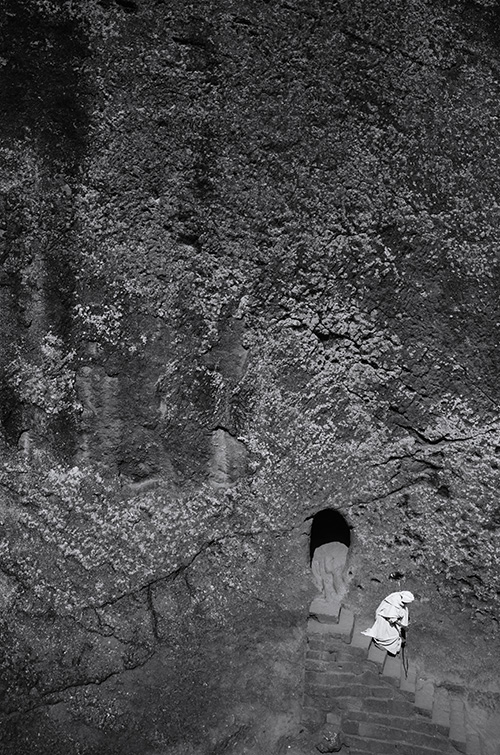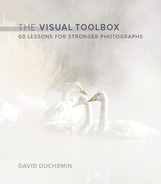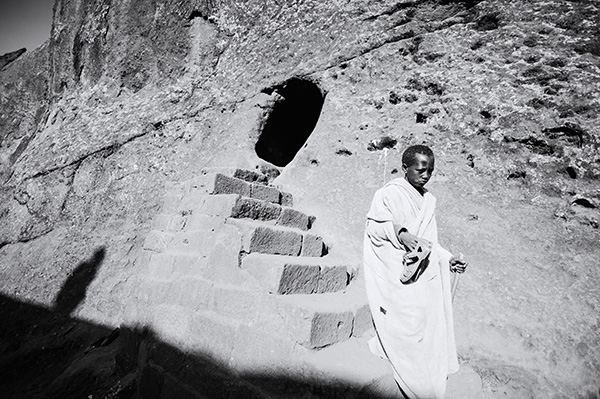Lesson 49. Use Scale
Scale is a powerful compositional tool and can be thought of in two ways. The first defines scale as a relationship between elements in the frame, and the second defines it in terms of the relationship of elements in the frame to the frame itself.
When we look at a photograph, we’re looking at a two-dimensional scene pulled from its context. Normally that context, out in the real world, gives us clues about the size of things. You know how tall a dog is because it’s standing beside a human being and you just know how big humans are. In other words, you have a frame of reference for comparison. To make that dog seem smaller, put him next to a really tall man, or to make him seem gigantic put him next to a really short one. The same is true in landscapes, and careful use of how we read scale, and how you manipulate elements within the frame, can allow you to more intentionally control what you express through your photograph.
Nikon D3s, 17mm, 1/8000 @ f/4, ISO 1250
Three different photographs of the same scene in Ethiopia. How does the different use of scale change your experience, or how you see the place?

Nikon D3s, 20mm, 1/500 @ f/8, ISO 200

Nikon D3s, 28mm, 1/1000 @ f/5.6, ISO 200
“How much negative space can you create before the image stops feeling right?”
In Antarctica, for example, I wanted to give a sense of just how large the icebergs were. Without a known point of reference—there was sea and ice, that’s all—it would have been very hard to create that sense. But put a zodiac inflatable boat, or even the larger ship we were traveling on, near that iceberg and suddenly others know exactly how big the ice is.
Furthermore, knowing what we know about perspective—specifically that closer objects appear larger and distant objects appear smaller—we can use that to exaggerate the appearance of scale. You would not, for example, put the ship in the foreground and the iceberg in the background, and use a wide-angle lens. In fact, if you did that you’d be creating the reverse effect, so if that’s what you’re going for, well, go for it. But if you backed up a ways, made sure the boat and the iceberg were close to each other, and used a longer lens to further compress the feeling of distance between them, you’d exaggerate the scale, creating the sense of just how big the iceberg is. Now put a small inflatable boat in the scene next to the ship and the iceberg, and the sense of scale has changed again; you’ve made the ship look massive and the iceberg look truly gigantic. In reference to the images that accompany this lesson, the effect is the same—the smaller I allow the human elements to become, the more space the other elements occupy, making them larger, compared to the humans, and the humans smaller compared to the frame itself.
Sometimes it is not elements in relation to each other but in relation to the frame that conveys a sense of size or space. Look at the final image in this lesson: the small huddled figure of a woman emerging from the hole in the cliff wall. Sure, she’s small relative to the cliff, but she’s also tiny relative to the frame. The more exaggerated you make this, the smaller she or any element will feel. She looks lonely, too, because we can see from the vastness of space around her, devoid of other human elements, that she’s alone. In a sense we’re still reacting to her size in relation to another element in the frame, but that element is negative space itself—in this case, the cliff wall.
Playing with this will change the way readers of your photographs experience the space within it, and that will affect their feelings and thoughts. A large elephant placed small in the frame can say,” Look how vast the savannah is.” That same elephant completely filling the frame with the tiniest of birds on its head can say, “Look how huge this elephant is (or, how tiny the bird is).”

